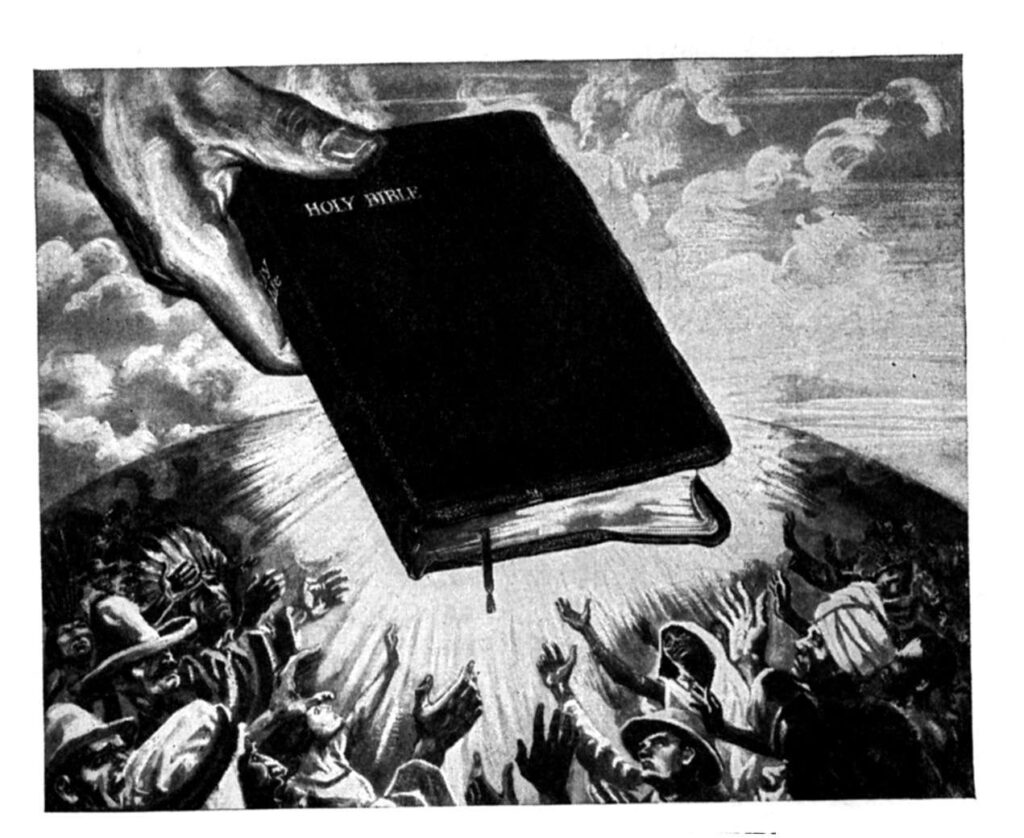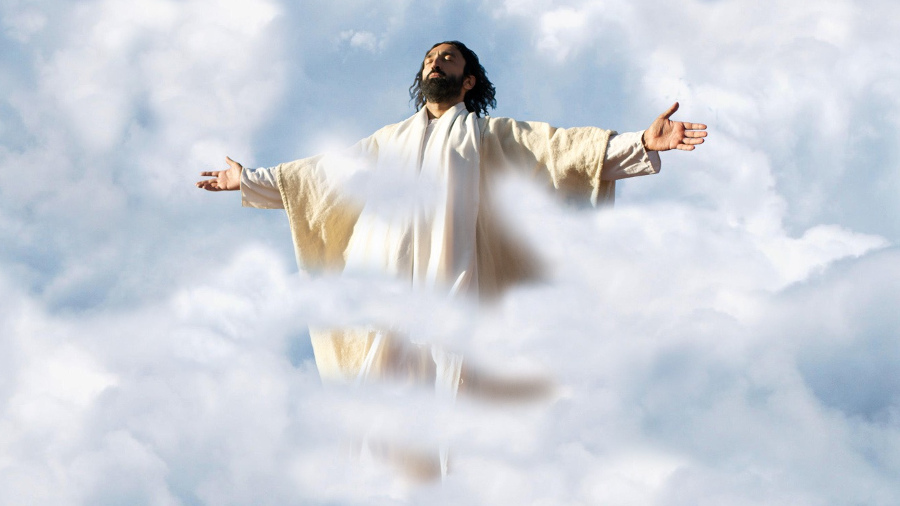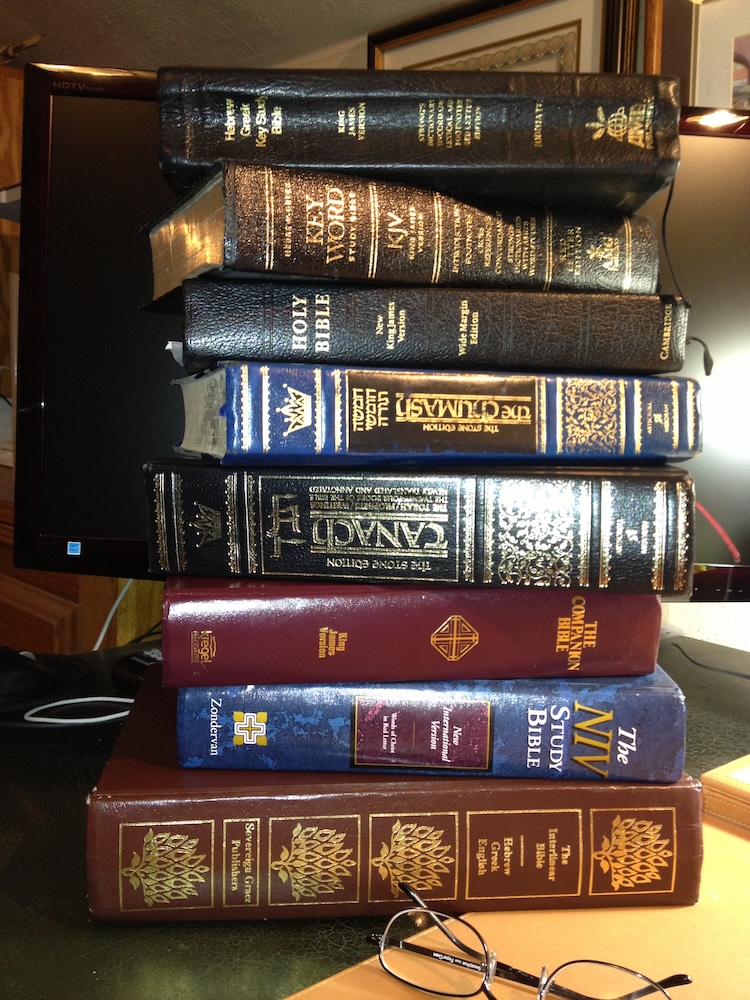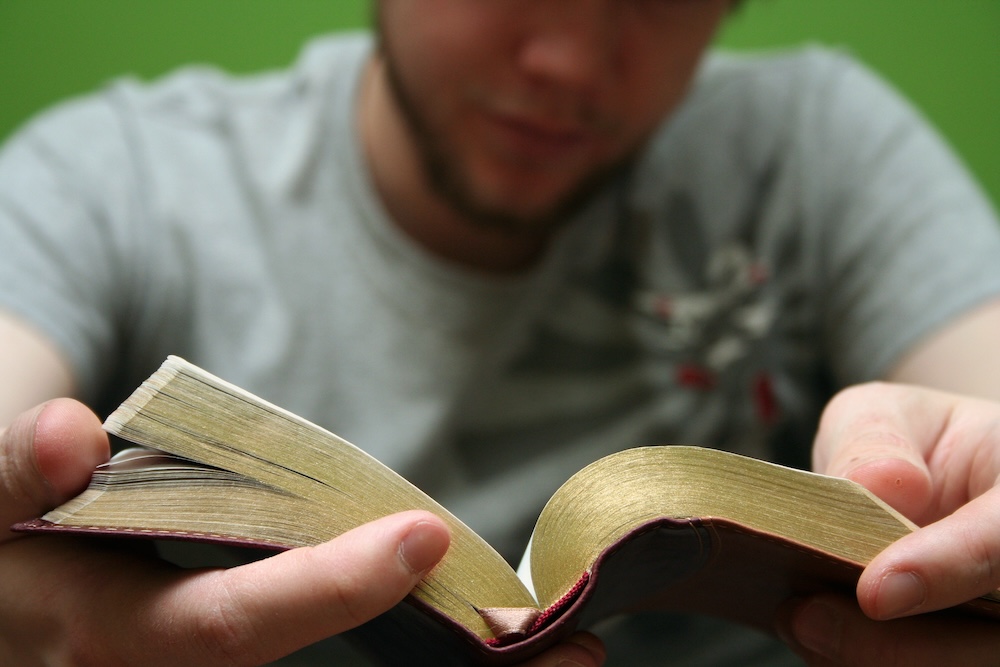
The Bible’s Torah Connection
Pretend you were the infinite, all-powerful, omniscient and loving Creator of the universe who had made man to have a relationship with him, how would communicate with finite humans? How could you pour all that you know and are into man, so that he could experience the love, joy, peace, goodness, holiness, wisdom, understanding and truth that you have? Would it not be like trying to pour the world’s oceans into a thimble. At best you would need to distill down the essence of who you are and what you know into its simplest and most basic form so as not to overwhelm your human creation. But how would you do this, and what would be the vehicle you would use to convey this vast revelation to puny man? And does a physical human being ultimately traverse the vast gulf between him and his Creator to become like his Father in heaven?

There is a path between here and there! It has been laid out. It is called the Torah—a biblical Hebrew word meaning “instructions, teachings, precepts and law.” The Torah is a tiny kernel of the essence of the very mind, will, character and heart of the Creator, and it is his gift to man, for man to live an abundant physical life here and now with the possibility of graduating to a position of immortality in Elohim’s eternal kingdom and spiritual family. The Torah is the thimble into which YHVH poured his heart into bite sized pieces that would not choke man’s understanding of the vastness of who he is.
How do we know these things? The Bible likens the Torah that emanates from the Eternal Creator to divine light that pierces the spiritual darkness of the man’s physical existence. Moreover, the Torah is like a path that leads man to YHVH Elohim, the Creator. It is the epitome of all wisdom, knowledge and understanding that when embraced and obeyed leads man to the fulfillment of his highest desires. This very Torah is revealed in the pages of the Bible from Genesis to Revelation. Yes, not just in the books of the law of Moses, but in the New Testament or Testimony of Yeshua as well! To those who will remove the religious blinders from their eyes, they will see that this truth-path has been hiding in plain sight from the beginning of man’s creation. It is merely requires one to freely choose this upward path.
The Living and the Written Torah Is the Central Theme of the Bible
In the pages of the Bible we revealed the Creator’s path laid out that enables man to transcend from the physical, mortal and temporal plain to the spiritual, immortal and heavenly plain. YHVH’s Torah is way upward and it is a highway that contains two lanes both going in the same direction. They are at the same time indivisible yet separate like two sides of the same coin; they co-labor together and together make a complete picture. That two lane highway to heaven is the Living Torah (i.e., Yeshua the Messiah who is the Word of Elohim in human form) and Written Torah (specifically the biblical books of Genesis to Deuteronomy, and in the larger sense, the entire Old Testament or Tankah, and eventually the Bible, the Written Word of Elohim). The Torah in both forms are the dominant them of the entire Bible from beginning to end as we are about to discover.
Yeshua and the Torah-word of Elohim is one and the same thing—totally unified and absolutely indivisible, which is why I used the singular verb is above and not are in order to illustrate a point. Another way to say this is that the whole Bible is about Yeshua the Torah-Word of Elohim who came in human form (John 1:1, 14).
To further illustrate the unity of the Written and Living Torah Word of Elohim, we will discover later that the Bible’s dominant Torah theme is prominently highlighted at the beginning, middle and end of the Scriptures. This brief lesson is, by no means, a comprehensive study of the subject of the Torah as presented in the Bible. It is merely a quick overview to help you to begin viewing the Bible through a different set of spiritual glasses. To ensure that the locomotive driving your faith onward and upward is set on the right two rails—the Living Torah and the Written Torah. Thus, your spiritual train will not be derailed by wrong doctrine and false teachings.
In this study, we will focus more heavily on the Written Torah, as opposed to Yeshua the Living Torah, although I squarely rest my faith in the fact that without Yeshua the Messiah, it is impossible to fully understand, much less obey, the Written Torah. Furthermore, it is only Yeshua, the Living Torah and not the Written Torah who is capable of saving us from our sins (which the Bible defines as the violation of the Written Torah), and granting to us, by his merciful grace, the righteousness required to receive eternal life and entrance into Elohim’s everlasting kingdom and spiritual family.
The Written Torah Defined
Let us first define our terms. What does the word Torah mean as defined in the Bible? The primary meaning of the Hebrew word Torah/תּורה is “teaching, precept, instruction” and not the word law (as translated in most of our English Bibles), although it is translated as such some 219 times in the Tanakh (Old Testament). What is the fuller meaning of the word Torah?
According to Strong’s Expanded Exhaustive Concordance of the Bible, Torah, as already noted, signifies primarily “direction, teaching and instruction” (Prov 13:14). It is derived from the verb yarah/VRh meaning “to project, point out” and hence “to point out or teach.” The law of Elohim is that which points out or indicates his will to man…Seen against its background of the verb yarah, it becomes clear that Torah is much more than law or a set of rules. Torah is not restriction or hindrance, but instead the means whereby one can reach a goal or an ideal place.
Similarly, The Theological Wordbook of the Old Testament states that the word Torah means “teaching” whether it is the wise man instructing his son or Elohim instructing Israel. The wisdom of the Torah gives insight into all aspects of life so that a young person may know how to conduct themselves and to live a long blessed life (Prov 3:1f). Likewise through the Torah, Elohim, motivated by love, reveals to man basic insights on how men are to live with each other and how man is to approach Elohim. Through the Torah, Elohim shows his interest in all aspects of man’s life which is to be lived under his direction and care. The Torah of Elohim is his word to mankind—his instructions in right living or in righteousness.
As already noted, the word Torah originates from the root word yarah, which also means “to flow as water, to lay or throw as in shooting an arrow; to point out as if aiming the finger to make a point, to teach.” Another cognate (related word) of the word Torah is the Hebrew word moreh, which means “teacher or archer (as in one who shoots at a target).” Moreh derives from the same Hebrew root word, yarah, as does the word Torah, and signifies that law is the revelation of Elohim’s will (e.g., Isa 1:10). Therefore, when one is walking according to the Torah of YHVH Elohim, one is walking in the light of YHVH’s truth, which is hitting the mark of righteousness. Likewise, YHVH’s teachings or instructions are a river of life flowing from his throne aimed at hitting the mark of truth and righteousness. Conversely, the Hebrew word for sin is chata, which means “to miss the mark,” or to transgress the Torah as 1 John 3:4 states, “Sin is the transgression of the Torah-law.”
The Origin of Torah and Its Introduction into the World
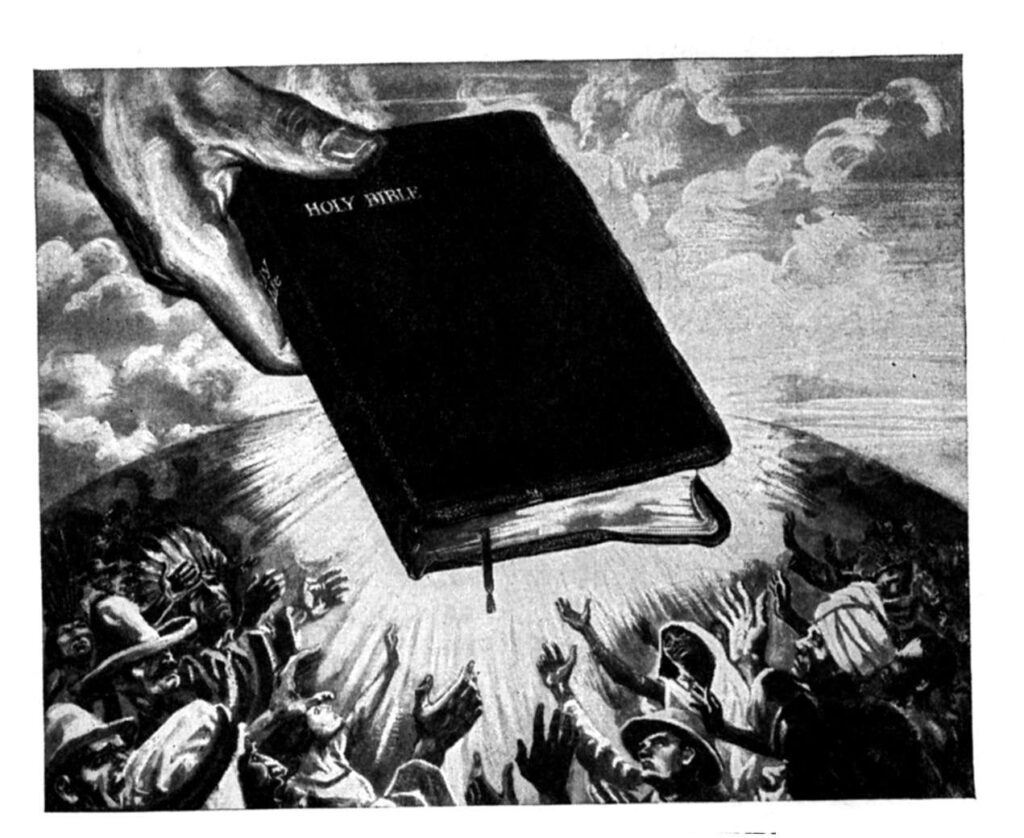
To the biblically naive, it is believed that the Torah-law originated with Moses. In reality, the Torah predates Moses. He was merely the human vessel through which Elohim gave the Torah-law in its codified form to the children of Israel at Mount Sinai. There are many examples in both the books of Genesis and Exodus before Mount Sinai that YHVH’s servants both knew of and followed the Torah or as much of it as had been revealed to them up to that time. This, however, is a different study and beyond the scope of this present discussion. Moreover, the Bible reveals that the Torah not only predated Moses and his ancestors, but the creation of man as well as the following points will hopefully make abundantly clear. Scripture makes numerous allusions to the Torah at the very beginning of the Bible in poetic and metaphorical terms. For example,
- In the creation account, Elohim said, “Let there be light” (Gen 1:3). The light of Elohim came into the darkness of this world. The creation of light was Elohim’s first creative act. As we shall see below, light is a Hebraic metaphor for the Torah, which is the divine knowledge and wisdom of Elohim representing his perfect and undefiled character and nature.
- By Yeshua who is Elohim and is the Word of Elohim (John 1:1), everything was created (Heb 11:3). Elohim’s Word is light and truth. Yeshua is the Word of Elohim and is also the Light of the world (John 1:1, 8, 14; 8:12; 14:6). He is the Living Torah-Word of Elohim incarnate (John 1:1, 14)
- The Word of YHVH is Torah; it is his instructions in righteousness (Ps 119:176).
- The Torah is truth as we read in Psalms 119:142, “Thy righteousness is an everlasting righteousness, and thy Torah is the truth.”
- The Torah is spiritual light as we read in Proverbs 6:23, “For the commandment is a lamp; and the Torah is light; and reproofs of instruction are the way of life.”
As we can see, the Torah or light of Elohim, which is the truth or Word of Elohim, which is Yeshua the Word of Elohim predated the giving of the Torah-law to Moses and the children of Israel at Mount Sinai. To say that the Torah originated with Moses is to hold to a very narrow and, quite frankly, an unbiblical and a naive understanding of the concept of Torah.
The Torah in the Beginning, Middle and End of the Bible
As stated at the beginning of this brief study, the Living and Written Torah is the dominant theme of the Bible. Let’s quickly see how this is the case by reviewing the three parts of the Bible—the beginning, the middle and the end to see how Torah is revealed here.
- In Genesis one, at the beginning of the Bible we find the following:
- Genesis 1:1, The Hebrew grammatical marker word consisting of an aleph and tav/<t (the first and last letters of the Hebrew alphabet) are found twice in verse one, just before and after the word heaven. They are the fourth and seventh Hebrew words in this sentence. The astute Bible student will see this as a prophetic reference to Yeshua, who is the Beginning and the End (the Alpha and Omega /AW, Rev 1:8, 11; 21:6; 22:13). It also points us to the fact that Yeshua would come from heaven in the fourth millennia and would come back to earth from heaven in the seventh millennia.
- Genesis 1:3, The introduction of light into the world was the first creative act of Elohim. Light is a biblical metaphor for Torah or the Word of Elohim (Prov 6:23; Ps 119:105). Light pierced and still pierces the darkness of evil. Darkness is a biblical metaphor for Torahlessness or all that which is of the world, the flesh and the devil and which is contrary to or is in rebellion to and against the will and Word of Elohim (John 1:5; 3:16–21).
- Genesis 1:3–5, Light is mentioned five times here. Some Bible teachers refer to this as the five points of light—a reference to the five books of the Torah (Gen through Deut), and to Yeshua, who was the light of the world before the sun was created on the fourth day in Genesis 1:14. Yeshua, that same spiritual Torah-light, will eventually replace the sun in the heaven on earth of the New Jerusalem (Rev 21:23; 22:5).
- In Genesis 1:3, we find the complete spelling of the Hebrew word for light (or/אור spelled aleph, vav, resh), as opposed to a defective spelling minus the vav that the physical sun gives (see Gen 1:14, the first reference to light in that verse is spelled defectively). This points to the supreme and supernal Torah-light from heaven, which is Yeshua, the Torah-Word of Elohim that was made flesh and dwelt among men (John 1:1, 14), and who was the spiritual Light of the world (John 1:4–5; 8:12).
Next we come to the exact middle of the Bible, which is Psalm 119. This is the Bible’s longest chapter and the highest praise of Torah to be found in all of the Scripture. This psalm examines all aspects of the Torah much like a jeweler examining and admiring every facet and angle of a large, priceless and one-of-a-kind gem stone. In this psalm, we learn what should be our view of and response toward the Torah of Elohim.
Finally, we come to the end of the Bible, which is the Book of Revelation. In the last two chapters of the Bible we find a number of references to the Written Torah, and to Yeshua, the Living Torah.
- Revelation 22:14 states, “Blessed are they who keep his [Torah] commandments, that they may have the right to the tree of life, and may enter through the gates into the city.”
- Revelation 21:23; 22:5 (also 2 Cor 4:6) reveals that Yeshua will be the light of the New Jerusalem. Yeshua is the Light of the World (John 1:4–5; 8:12) and the Sun of Righteousness (Mal 4:2) whose face shines like the sun (Rev 1:16). As the pre-incarnate Yeshua, Living Torah-Word of Elohim was the light that illuminated the earth until day four of creation when the physical sun was created, even so Yeshua will once again be the Light of the world as he was during the first four days of creation.
- Revelation 22:3, In the New Jerusalem, there will be no more curse because there will be no more sin or Torahlessness (1 John 3:4 states that sin is the transgression of the Torah), which brings on the curses of the law (Deut 28:15–68), which is death (Ezek 18:4; Rom 6:23)—the ultimate curse for violating the Torah, which are Elohim’s instructions in righteousness.
- Revelation 22:12, Yeshua is bringing spiritual rewards to his servants based on how faithful they were to obeying and teaching the Torah (cp. Matt 5:19).
- Revelation 22:13, The alpha and omega or (in Hebrew) the aleph and tav—the beginning and end of the Torah-Word of Elohim—is another reference to the written Torah and to Yeshua, the Living Torah. This is a repetition of the same concept found in the first verse of the Bible.
- Revelation 22:15 (also 21:8), Outside of the New Jerusalem are found sinners or those who are Torahless or violators of the Torah, for sin is the violation of the Torah (1 John 3:4).
- Revelation 22:17, The Spirit and bride say come. Who gets to come into the kingdom of Yeshua as his bride? Those who have prepared themselves for the marriage supper of the Lamb by putting on the robes of the righteous acts of Torah (see Rev 19:7–9, NIV and NAS). Again, the Scriptures define righteousness as obedience to the Torah (Ps 119:172).
- Revelation 22:18–19 tells us to neither add to nor subtract from the Book of Revelation, and by implication, the entire Bible. This echoes the warning Moses wrote at the end of the Torah (Deut 4:2; 12:32). The Torah of Elohim is the word or instructions of Elohim and not only encompasses the first five books of Scripture, colloquially called the Torah or Pentateuch, but ultimately includes the whole Bible.
- Revelation 22:20–21, The Hebrew word amein is found twice in the last two verse of the Bible is the very last word of the Scriptures. Amein means “verily, truly” and is a Hebrew word that originates from the Hebrew word emet/<nt meaning “truth.” The word emet is spelled aleph, mem and tav, which are the first, middle and last letters of the Hebrew alphabet. Therefore, emet is a word that signifies all that is revealed on a subject from aleph to tav, thus comprising all that can be written on it and no more can be added to it. Thus, the very last word in the Bible clearly points to both the written Torah of YHVH Elohim, and to Yeshua, the Living Torah, which is the Word of Elohim in human form and is the Truth in its final and highest form. Spiritually speaking as revealed in the Bible, Yeshua, truth and Torah are one in the same and are indivisible.
The 32 Blessings and Benefits of Obeying YHVH’s Torah-Law
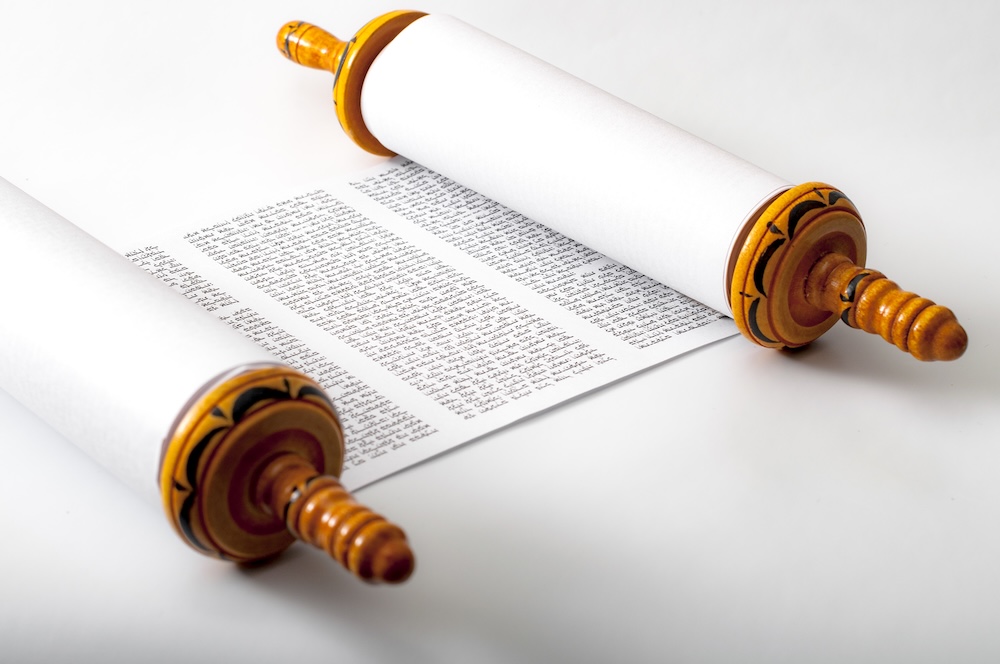
The Scriptures reveal that the Torah is much more than a list of dos and don’ts as many people have falsely been led to believe, and is therefore, in their mind, a negative thing. Deuteronomy 4:6 says that the Torah is our wisdom and understanding before the nations of the world. In Deuteronomy 11:8, we learn that the Torah makes us strong. The word strong in Hebrew is chazaq meaning “to be strong, grow strong, to prevail, to be firm, be caught fast, be secure, to grow stout, grow rigid, to restore to strength, give strength, sustain, encourage, make bold, encourage, to repair or to withstand.” This sounds like a good thing!
Sadly, most Christians have been told again and again ad infinitum and ad nauseam that the law of Moses or God’s Torah-law is “against them,” that they are “not under it,” that “it was nailed to the cross” or “done away with.” Nothing could be further from the truth as we shall see below.
Contrary to what most people have been told, YHVH’s Torah is not against man; rather, it might be said that God’s (Elohim’s) Torah-law itself is neutral; neither positive nor negative. In reality, it is like a mirror that simply reflects the image portrayed in it. Torah reacts according to human action. Those who obey it are blessed and those who disobey it are cursed. For example, just as the law of gravity is also neutral. Even as it benefits humans by keeping them from floating off to a certain death in outer space, so the same law is against us should we choose to jump off a bridge, a high building or a cliff; the results are death. Again, Elohim’s Torah-law, like his law of gravity is neutral. It can be for or against us depending on whether we acknowledge, respect and then obey it or not. To ignore it is called sin and results in death, for the wages of sin (i.e., the violation of Torah; 1 John 3:4) is death (Ezek 18:4; Rom 6:23).
The following lists delineate the few aspects of the YHVH Elohim’s Torah-law that are “against” us (that is, against sinners), and them the many aspects of YHVH’s Torah-law that are for man’s blessing and benefit.
On the negative side, when we disobey the Torah…
Continue reading

